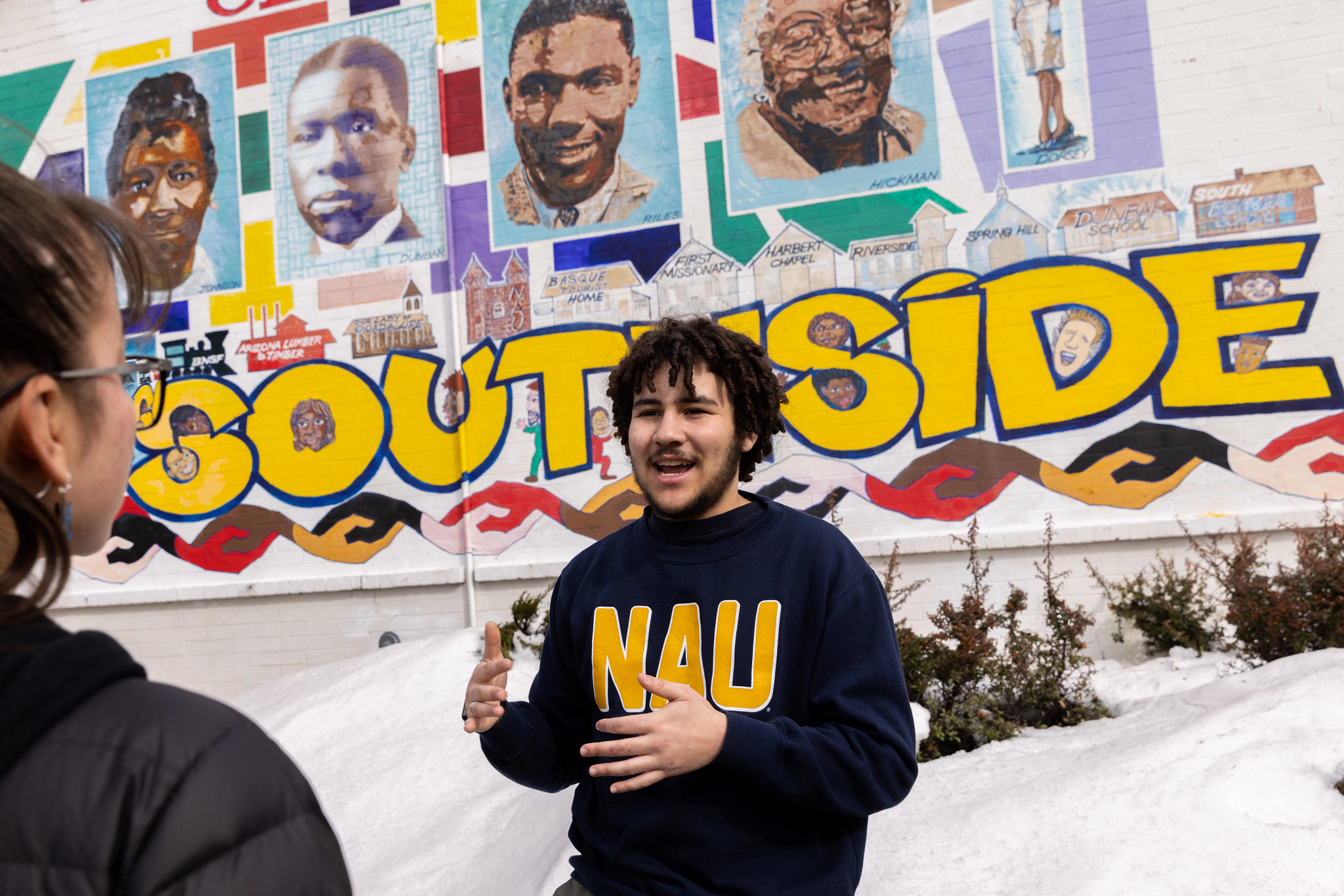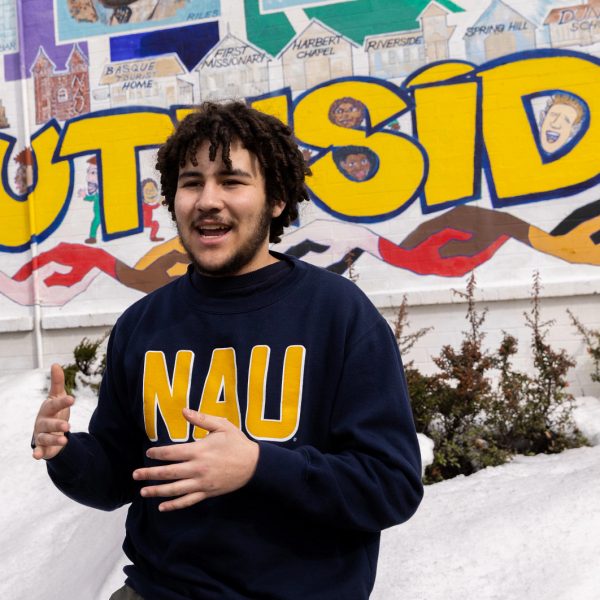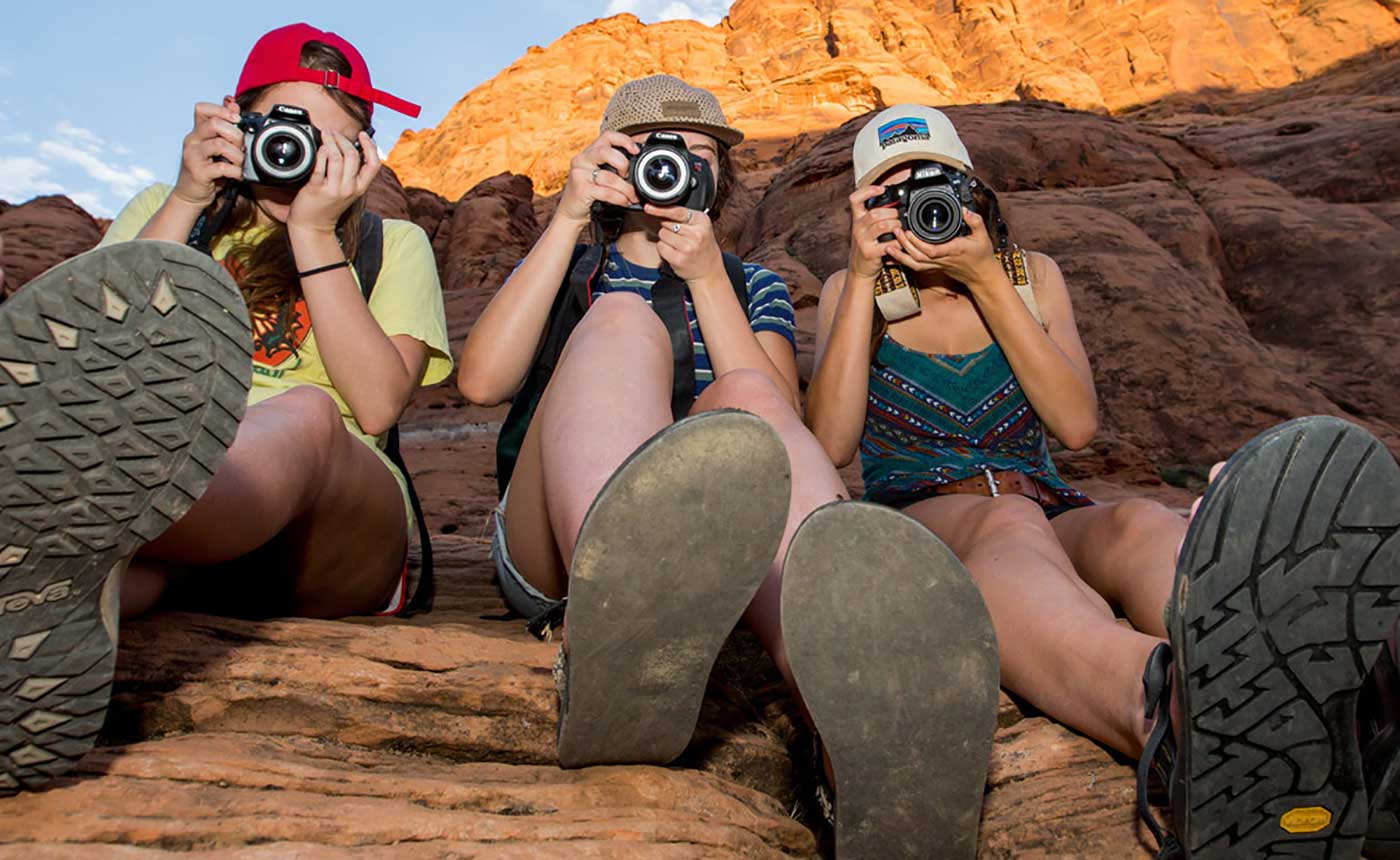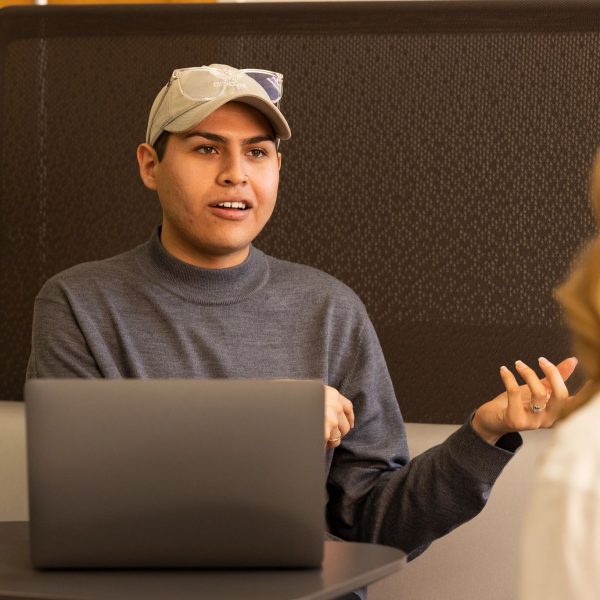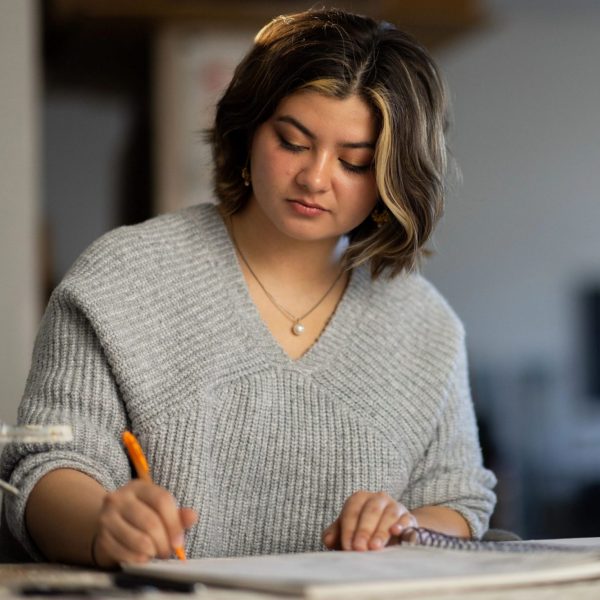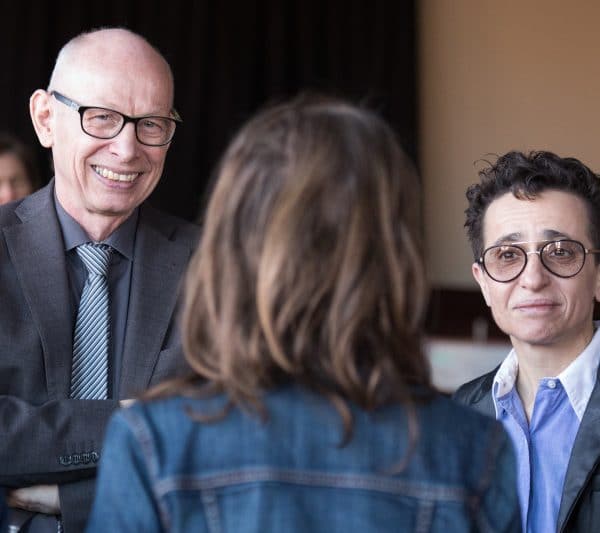Ty Holliday notices how towns are designed to help people get from one place to another.
With a major in Geography, Environment, and Society, his goal is to work in transportation planning, focusing on alternative transportation. But for his undergraduate research project, Holliday accepted a unique internship in the Southside community, working with scholars, residents, and library archivists. Under leadership at the Murdoch Community Center, Holliday helped expand a website that highlights “waymakers and pathbreakers” who welcomed African Americans to Flagstaff during the segregated early to mid-twentieth century.
The Southside is south of the railroad tracks and Route 66. The area has a rich history. It’s one of Flagstaff’s oldest neighborhoods, settled by diverse groups, including African American lumber mill workers, Basque sheepherders, and Italian and Mexican immigrants. “The Southside is very interesting to me. It’s wedged between downtown and the NAU campus,” Holliday says. “It has a fascinating history with people who have done a lot for Flagstaff in general. So, for me, I want to tell these stories, and the Southside has not had a voice for a long time.”
Holliday will talk about his project at NAU’s Undergraduate Symposium on April 28.
Working under the direction of Dr. Ricardo Guthrie, who developed the Historic Southside Project at the Murdoch Center during the early 2010s, Holliday reviewed historical records, images, and files in NAU’s Cline Library Special Collections. Holliday used data to post on Dr. Guthrie’s website in an interactive, engaging format for viewers. The project builds on over two decades of materials culled and curated by Dr. Guthrie and other student interns working at the Murdoch Community Center to uncover the stories about Cleo Wilson Murdoch, Wilson Riles, and many others whose records are housed in Cline Library and in Arizona State Archives.
The collaboration and internship has been fruitful and rewarding. Holliday first met Dr. Guthrie in spring 2022, after he learned Dr. Guthrie was a longtime colleague of his aunt, Gail Holliday—when both had worked at the Harvard School of Public Health in the 1990s.
The project is also funded by the City of Flagstaff and the Route 66 Road Ahead Foundation.
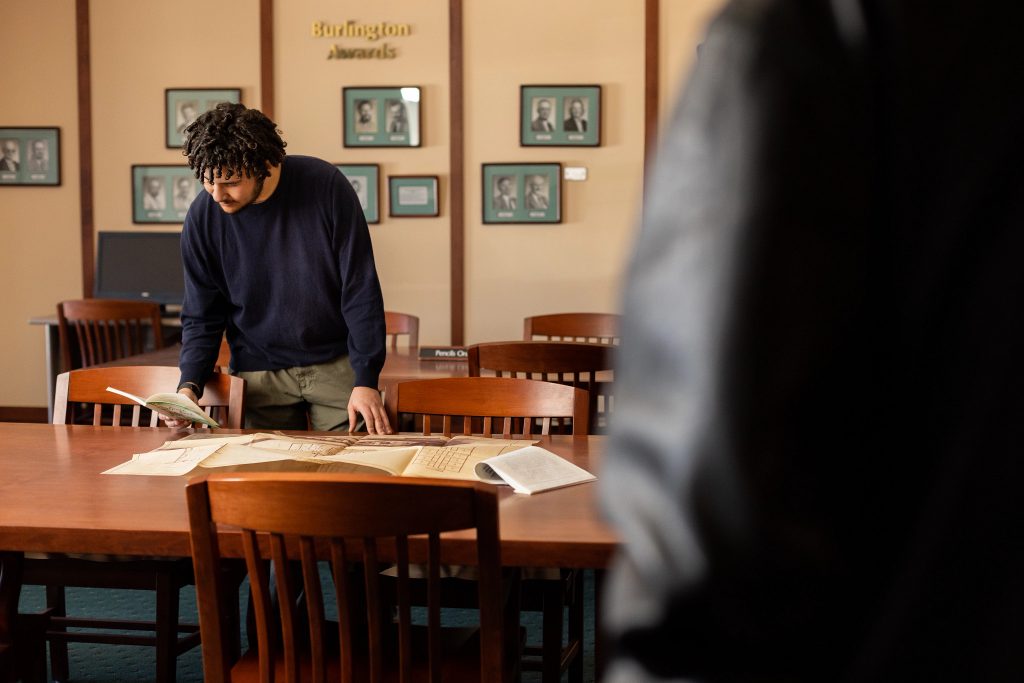
Under the direction of Dr. Guthrie, Holliday used the library data to update the website focusing on the Southside’s African American history. “I have been building a website where people can go and look at these past people, past buildings, and past places,” he says. “I pieced together data of residents’ knowledge of what the Southside was and what it is today. We’re hoping that the website can be a tool for visitors to learn about the community’s history.”
Holliday was provided oral histories of unheard voices of the Southside community, the “heroes and sheroes” that were collected by Dr. Guthrie and Cline Library staff. Cleo Wilson Murdoch was one such voice. She was a teacher and principal at Dunbar School, a segregated school in the Southside neighborhood. “While she didn’t get to live that long—she died at age 39—she played a huge role in lifting up the voices in the community and doing so much for the kids of the Southside” who lived in segregated neighborhoods, Holliday says. Dunbar School was converted into a community center and renamed the Murdoch Community Center in her honor.
Holliday also updated historical information about Wilson Riles on the website. Like Murdoch, Riles was a principal at Dunbar School. Before that, he was one of the first Black students to enroll at NAU, known as Arizona State Teachers College at the time. In 1953, Riles worked with Flagstaff Superintendent Sturgeon Cromer to desegregate Flagstaff’s public schools—a year before the US Supreme Court decision banning segregation. The Riles building on north campus in Flagstaff is named after him.
Under Dr. Guthrie’s direction, Holliday collaborated with another student intern to develop a digital “Green Book” modeled after African American traveler books published between 1936 and 1967. The Southside Green Book Passport was born! “The Green Book was a list of safe places where Black travelers could stay and eat,” Holliday explains. “Because of segregation, you couldn’t really know what was safe back then, so this book was kind of the all-knowing traveler’s guide of plenty of safe places.” Holliday helped create a Southside Green Book “passport” that users can digitally flip through, discover where travelers could stay in the Southside, and read stories about the people who started businesses there.
While Holliday is happy to share these stories from the Southside, he is also concerned history will be lost as buildings transition from one use to another. “We need to be mindful of the history a place has because once it’s gone, it’s just gone,” he says. “We could be losing sites with so much history that we can learn from today. For example, the Murdoch Center used to be a segregated school, then it was turned into a community center after local residents fought to save it from destruction. If we don’t know the history of that, we could lose it, so one of the most important things is just making sure that the history is preserved.”
Holliday leaves this project with a greater appreciation for how a place came to be. “It’s made me consider the places we use each day and the people who live and lived in those places and who built those places. Because I think a lot of times, I take the streets or places we have for granted,” he says. “People had to put them there with a lot of care. There are a lot of reasons why things are the way they are—it ties into my major because I have a greater knowledge of what shaped the places we have today.”

